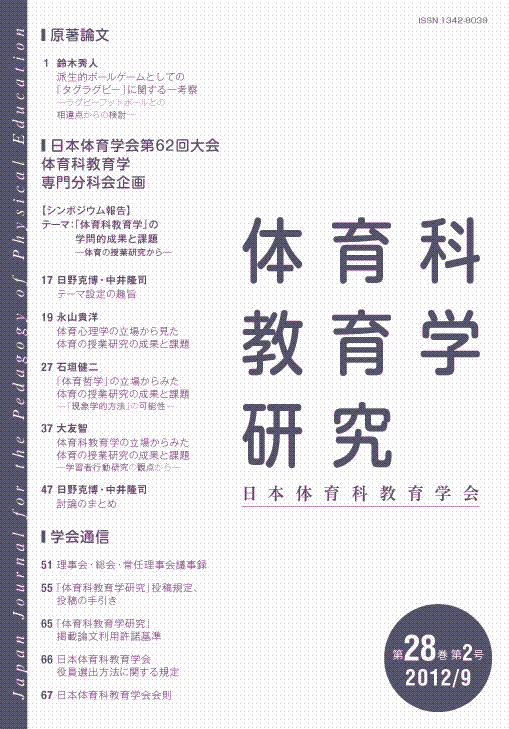Volume 34, Issue 1
Displaying 1-23 of 23 articles from this issue
- |<
- <
- 1
- >
- >|
original
-
2018Volume 34Issue 1 Pages 1-16
Published: March 30, 2018
Released on J-STAGE: April 27, 2018
Download PDF (667K)
-
2018Volume 34Issue 1 Pages 17-30
Published: March 30, 2018
Released on J-STAGE: April 27, 2018
Download PDF (620K)
-
2018Volume 34Issue 1 Pages 31
Published: March 30, 2018
Released on J-STAGE: April 27, 2018
Download PDF (116K) -
2018Volume 34Issue 1 Pages 32
Published: March 30, 2018
Released on J-STAGE: April 27, 2018
Download PDF (155K) -
2018Volume 34Issue 1 Pages 33-37
Published: March 30, 2018
Released on J-STAGE: April 27, 2018
Download PDF (314K) -
2018Volume 34Issue 1 Pages 38-43
Published: March 30, 2018
Released on J-STAGE: April 27, 2018
Download PDF (1530K) -
2018Volume 34Issue 1 Pages 44-50
Published: March 30, 2018
Released on J-STAGE: April 27, 2018
Download PDF (530K) -
2018Volume 34Issue 1 Pages 51-57
Published: March 30, 2018
Released on J-STAGE: April 27, 2018
Download PDF (1157K)
-
2018Volume 34Issue 1 Pages 59-60
Published: March 30, 2018
Released on J-STAGE: April 27, 2018
Download PDF (191K) -
2018Volume 34Issue 1 Pages 61
Published: March 30, 2018
Released on J-STAGE: April 27, 2018
Download PDF (183K) -
2018Volume 34Issue 1 Pages 62
Published: March 30, 2018
Released on J-STAGE: April 27, 2018
Download PDF (188K) -
2018Volume 34Issue 1 Pages 63
Published: March 30, 2018
Released on J-STAGE: April 27, 2018
Download PDF (170K) -
2018Volume 34Issue 1 Pages 64
Published: March 30, 2018
Released on J-STAGE: April 27, 2018
Download PDF (158K) -
2018Volume 34Issue 1 Pages 65
Published: March 30, 2018
Released on J-STAGE: April 27, 2018
Download PDF (178K) -
2018Volume 34Issue 1 Pages 66
Published: March 30, 2018
Released on J-STAGE: April 27, 2018
Download PDF (162K) -
2018Volume 34Issue 1 Pages 67
Published: March 30, 2018
Released on J-STAGE: April 27, 2018
Download PDF (174K) -
2018Volume 34Issue 1 Pages 68
Published: March 30, 2018
Released on J-STAGE: April 27, 2018
Download PDF (196K) -
2018Volume 34Issue 1 Pages 69
Published: March 30, 2018
Released on J-STAGE: April 27, 2018
Download PDF (165K) -
2018Volume 34Issue 1 Pages 70
Published: March 30, 2018
Released on J-STAGE: April 27, 2018
Download PDF (192K) -
2018Volume 34Issue 1 Pages 71
Published: March 30, 2018
Released on J-STAGE: April 27, 2018
Download PDF (163K) -
2018Volume 34Issue 1 Pages 72
Published: March 30, 2018
Released on J-STAGE: April 27, 2018
Download PDF (188K) -
2018Volume 34Issue 1 Pages 73
Published: March 30, 2018
Released on J-STAGE: April 27, 2018
Download PDF (196K) -
2018Volume 34Issue 1 Pages 74
Published: March 30, 2018
Released on J-STAGE: April 27, 2018
Download PDF (169K)
- |<
- <
- 1
- >
- >|
